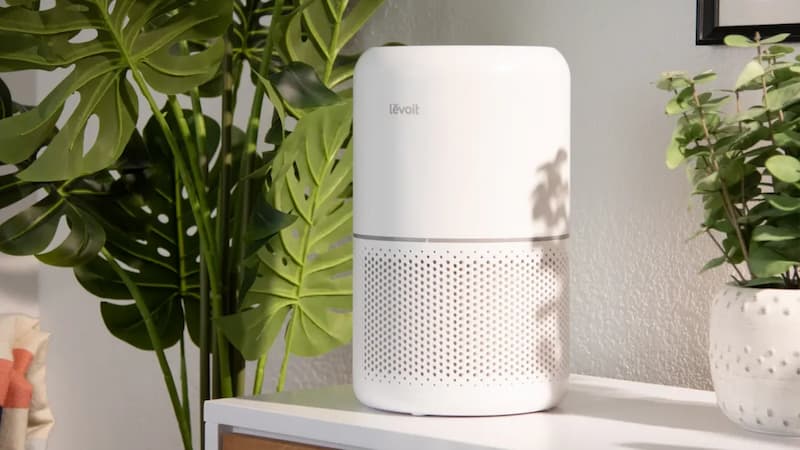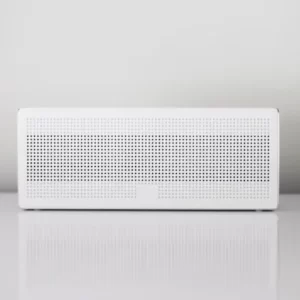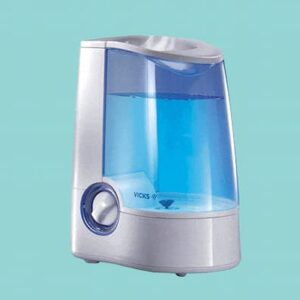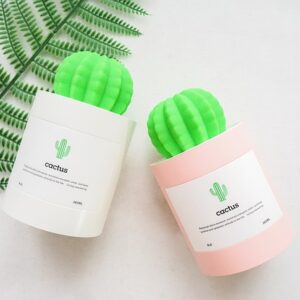Electricity is used to power air purifiers. We must consider the power consumption of air purifiers, just as we would with other electric items.
This is one of the most often asked inquiries concerning air purifiers:
Do air purifiers waste a lot of electricity?
No, air purifiers don’t waste a lot of electricity. However, if used for a long time, they can waste a lot of electricity.
Let’s take a look!
Table of Contents
Do Air Purifiers Waste A Lot Of Electricity?
No, air purifiers don’t consume a lot of electricity.
They can, however, use up a lot of electricity if used for an extended period of time.
The most popular air purifier uses 334, as was previously mentioned.49 kWh of electricity per year. This assumes that each day there are 16 hours of active time and 8 hours of standby time. This is a reasonable amount of usage, in my opinion. And the amount of electricity used reflects it.
Just two hours a day, on average, are spent using my air purifier. My use of electricity has decreased significantly as a result.
Let’s consider the electricity use of air purifiers in context.
An air purifier’s daily electricity consumption (i.e.e. 0.81 kWh on average) is equivalent to:
the energy consumption of a TV after 13 hours and 50 minutes of use.
34 minutes’ worth of electricity used by an electric fireplace.
after 20 hours and 45 minutes, how much power a fan uses.
In the end, air purifiers don’t consume much electricity on an hourly basis. Nevertheless, based on usage, they may eventually consume a sizeable amount.
How Many Watts Does Air Purifier Use?
Reading your air purifier’s usage (typically expressed in watts) is the first step in determining whether or not it consumes a lot of energy.
One kW (1000 watts) per hour is equivalent to one unit on an electricity bill.
To put it more simply, your electricity bill will go up by one unit if all of your electric devices have a power of 1 kW and are used simultaneously for an entire hour.
You could run an air purifier for 20 hours without stopping at its typical 50 watt power to add one unit. Compared to a computer’s 365 watts and a light bulb’s 60 watts, respectively,
The majority of your common electric appliances are not as energy-efficient as your air purifiers.
Using an air purifier won’t have a significant impact on your electricity bill, as you can see. How many watts does your air purifier use? We are happy to provide you with a few examples.
- Rabbit Air MinusA2 – max 48 W.
- Levoit LV-H132 – max 28 W.
- Honeywell HPA300 – around 130 W.
- Winix WAC9500 – max 15 W.
- Coway AP-1512HH – around 15W.
All of these air purifiers are included in our best air purifiers list in 2020.
If this is your top concern, look for air purifiers that have received an Energy-star rating before making a purchase. The most energy-efficient appliances for your house are these air purifiers.
What Does Electricity Get Used For In Air Purifiers?
The devices known as air purifiers are quite basic. Your room’s air is drawn into their fan, which they have. Pollutants are then captured in one or more filters, after which clean air is returned to your room. The fan itself, which needs a motor to run it, is the primary energy consumer during this process.
The air purifier’s smaller electronic components, besides the fan, also use a small amount of electricity. These include elements like the buttons and sensors, as well as any interfaces with WiFi or Bluetooth functionality. When compared to the fan, these parts use a very small amount of electricity.
Air Purifier Fan Speeds & Electricity Consumption
Another thing to bear in mind is that the power rating for the majority of air purifiers represents the maximum amount of power that they can use. At this point, the air purifier’s maximum fan speed is used.
You won’t likely use the air purifier at its highest fan speed for more than a couple of hours each day if you use it at home frequently. Many air purifiers even come equipped with air quality sensors that allow them to automatically change the fan speed in response to the air quality in the room. Very good air purifiers with an air quality sensor that automatically adjusts fan speed include the Coway AP1512HH and Winix 5500-2.
So it makes sense to assume that the actual cost of operating your air purifier will be less than our projections above.
Can An Air Purifier Be Used For How Many Hours Per Day?
You may hear different recommendations, but basically around 12 hours minimum is a good rule of thumb. For maintaining clean air, turning it on all day is preferable.
Some people may need to keep theirs running all day on a higher setting if they reside in an area with particularly bad air pollution (for instance, an area with outdoor fires). You might be fine with 12 hours, or even 8, for light duty air cleaning.
In my experience, dealing with problems like dust and allergies need at least that much, but you’ll often get the best results just by leaving it running all the time.
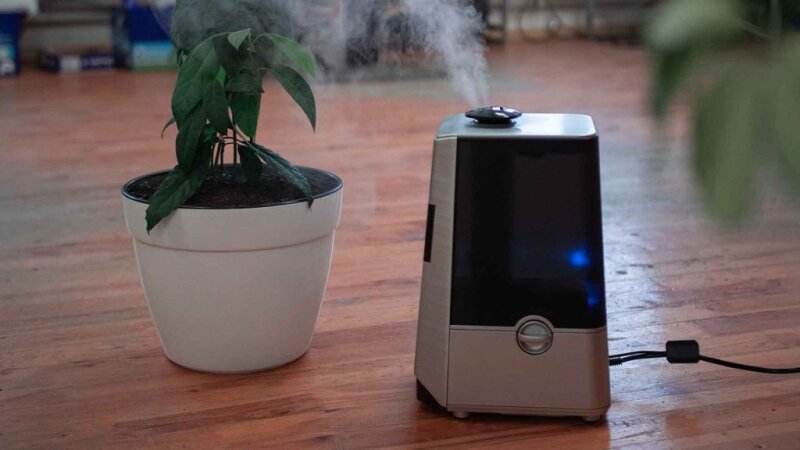
How Long Does An Air Purifier Need To Purify A Space?
An air purifier’s airflow rate (measured in cubic feet per minute [CFM] or CADR rating] and fan setting determine how long it takes to clean a room. Depending on the efficiency of the air purifier and the size of the room, this could take anywhere from 20 minutes to 2 hours.
The amount of time will be multiplied by several factors if you use a fan setting that is quieter (lower speed). The clean air delivery rate (CADR) rating should be noted as being based on the purifier’s highest setting.
The relationship between room size and air purifier cleaning is illustrated in this diagram. To do this, you’ll need the manufacturer’s specifications (which brand-name air purifiers typically provide), as well as the room’s length and width to calculate its cubic-footage size.
The recommended room size (in square feet) and/or the amount of air they can move in one minute (CFM, or cubic feet per minute) are typically both specified in one or more of the manufacturer’s specifications. The top air purifier manufacturers include Clean Air Delivery Rate (CADR) specifications that have undergone laboratory testing.
You can learn more about an air purifier’s effectiveness in removing airborne contaminants by looking at its CADR rating. It offers a laboratory-tested illustration of the effectiveness of the product’s smoke, dust, and pollen particle removal.
Is It Acceptable To Keep An Air Purifier Running All Night?
Yes, it is perfectly acceptable to leave an air purifier on throughout the night. The level of noise and your ability to sleep next to it should be your main concerns. I’ll clarify what I mean as we go.
In fact, the majority of manufacturers will advise you to leave it on all night long because it is the simplest way to get the best results. In the end, the best way to maintain clean air in your home is through continuous filtration.
Ultra-quiet Or Sleep Modes
There are some factors to take into account, as I previously stated. You might not want the sound of a fan running to wake you up if you have trouble falling asleep. If, like me, you’re extremely sensitive to noise while you’re sleeping,) then you’re best off picking a model with a sleep mode or ultra-low noise mode or placing it further away.
When a purifier is in low noise mode, the fan still operates, but at a very, very low speed that is so quiet that it is almost impossible to hear it!
Brightness In A Dark Room
The bright LED indicators or control panel backlights on some models might be distracting if you need a room that is relatively dark to sleep soundly. Choose a model that has a “night” or “dark” mode or other low-brightness features, in my opinion.
To stop the issue, however, you might need to cover the LEDs with black electrical tape or something similar if you already purchased one.
What Characteristics Distinguish A Good Air Purifier?
There are several factors that definitely matter when it comes to getting results and healthy air from an air purifier:
The right size for the room it’s used in is important because air purifiers can only move so much air at once (measured in cubic feet per minute, or CFM). In a big room, for instance, a small model simply can’t move enough air.
They don’t even have to be expensive to be a high-quality, effective cleaning product! You do, however, need a high-quality product with effective cleaning capabilities. The better brands frequently offer this. To find out what to anticipate, look for the Clean Air Delivery Rate.
Choosing the RIGHT KIND of purifiers is important because ionizers, ozone generators, and other novel technologies don’t function the same way as HEPA purifiers. A HEPA purifier actually takes harmful substances out of the air without reintroducing them. Other types purport to trap particulates by producing ions or ozone, but either isn’t efficient or can irritate body parts. In some circumstances, they might even be dangerous.
Actually, it has been demonstrated that HEPA filters can eliminate some germs, microbes, and viruses from the air that otherwise could make people sick. It’s not necessary to spend a lot of money; a good air purifier (for a medium-sized room, for example), costs under $100 these days.
Although I wouldn’t consider them a necessity for every household, a good one is unquestionably worth the investment. With a variety of issues, including dust and pet allergens, they have been of assistance to me.
Place The Air Purifier In A Central Location
Placing your air purifier in the proper location within your room is another effective way to make sure it is operating at its highest efficiency level. Despite the fact that the majority of air purifiers can be placed against a wall, it is wise to keep the appliance as centrally located as possible. This makes sure that the air purifier can quickly clean the air by bringing it in from every area of your room.
Use The Auto Mode And Clean The Sensor
Today’s air quality sensors are a common feature of contemporary air purifiers. This sensor continuously samples the air in your space, and depending on the levels of air quality it detects, it changes the fan speed. The fan automatically lowers its speed if the air quality sensor indicates that it is good. This is a fantastic automated way to guarantee that your air purifier is operating at its best setting.
In order for the air quality sensor to provide accurate readings, it must also be cleaned on a regular basis. Your air purifier may run constantly at full speed if there is too much dust on the sensor itself.
Close The Doors And Windows For A Quick Clean
In order to purify the air, air purifiers do not create any fresh air. Your room’s air is cleaned before being sent back. The quickest way to improve the quality of the air in your room is to run the air purifier at its highest setting while keeping all the doors and windows closed. This makes sure that there aren’t any outside pollutants that the air purifier has to deal with. You should notice a noticeable improvement in the quality of the air after operating the air purifier in this manner for 1-3 hours. Following that, you can switch the air purifier to a lower, more energy-efficient fan speed.
The Fan Motor Power Will Effect The Energy Consumption
Obviously, the motor’s efficiency affects how much electricity is used. An electric motor’s efficiency ranges from 50 to 96%. Heat is produced from the wasted energy, which is released into the space. An electric motor operates most efficiently at 75% of its maximum load. A motor that is too big for an air purifier will therefore be operating at a much lower efficiency and using more electricity than one that is smaller and operates at 75% of maximum load. With the creation of the first brushless electric motor in 1962, the technology of electric motors has advanced significantly. As a result, all manufacturers use the most effective motor size for their air purifiers.
Power Consumption Depends On Fan Speed/ Air Speed
The fan will use more electricity and need to spin more quickly. This is evident in the graph below, where the straight line represents the same air purifier at various airflows. Clearly, a higher airflow requires a faster fan. This requires the fan motor to use more power, which increases power consumption. Actually, power consumption increases the airflow linearly.
Fan Architecture Also Impacts Energy Efficiency
Any fan can be recognized by anyone. A specially created air purifier fan is shown in the image below. It lowers noise while improving the effectiveness of converting power into the airflow.
Therefore, over the years, manufacturers have spent a lot of time and effort designing effective and quiet fans. They all chose similarly effective fans after having plenty of time to compare each other’s designs. Therefore, this does not account for a significant portion of the variation in energy efficiency among manufacturers.
FAQs
Air Purifiers: Do They Work?
As far as we are aware, air purifiers can assist in removing harmful indoor environmental contaminants like mold, smoke, and allergies. But their success depends on using the right filtration and cleaning methods.
Do Air Purifiers Help With Dust?
Dust particles with a diameter of 3 microns or less can be removed by HEPA filters in 99.97 percent of cases. They therefore help with dust.
HEPA filters in air purifiers are currently the most effective at removing dust from your home or place of business.
Do Physicians Advise Using Air Purifiers?
Doctor’s offices are full of germs, and both patients and staff are easily exposed to them. For this reason, many medical professionals now suggest using air purifiers and conducting routine cleaning.
Which Drawbacks Are There?
The air purifier’s biggest flaw is that in order for it to work properly, the windows must be shut.
This can be a problem when it’s hot outside or when you need to get some fresh air because of asthma or allergies.
They have the drawback of needing continuous maintenance, like changing the filter.
If filter replacements are delayed, the quality of the air may suffer.
Aside from the fact that they require space to function properly, they might not be the best option if you only have a small amount of available space.
They aren’t completely silent, so a quiet environment might not be ideal if that’s what you want.
The ozone they can emit is toxic to human health.
Furthermore, while it can help to improve indoor air quality, not all indoor air quality problems can be resolved by it.
To improve indoor air quality, it should be combined with other strategies, like enough ventilation.
Is It Necessary For Air Purifiers To Run Continuously?
The fact that air pollution is constant would benefit from your leaving your air purifier on all day. Running your unit continuously will have no negative effects as long as the filters are changed routinely.
How To Know Whether I Need An Air Purifier?
There are a few important signs to look for if you’re unsure whether you need one.
Do you sneeze more frequently than usual, even when there isn’t any dust or pollen in the air? This might indicate that the air quality in your house needs to be improved.
Strong chemical odors, such as those from varnish or disinfectants, may also be a sign that the air in your home is not as clean as it should be.
If you find dust mites in your home, that is another telling sign. These tiny creatures thrive in unclean environments, so their presence is a good sign that your air needs to be cleaned up.
And finally, if you have COPD or emphysema, you might want to think about buying one.
The air can be made easier to breathe by using these devices to remove dangerous particulates.
How Long Does An Air Purifier Take To Clean A Room?
An air purifier ought to be able to eliminate most pollutants from the air in a room within the first 45 to 3 hours of use. How quickly an air purifier can clean the air is determined by its ACH (air changes per hour) and other factors.
What Is The Cost Of Running An Air Purifier?
The daily cost of operating an air purifier can range from $0.02 to $0.32. In standby mode, an air purifier can be had for between 0 and 86 cents per year. When using air purifiers, one uses between 0.5 and 8 percent more electricity.
Does Using An Air Purifier Require Closing Windows?
No matter if the doors are open or closed, nothing changes. The air purifier will clean the surrounding area’s air regardless of where it is placed. Close all windows and doors while using an air purifier to prevent any extra outside pollutants from entering the space.
What Is A House’s Biggest Electricity Consumer?
The average American home uses about 893 kilowatt-hours (kWh) of electricity each month, according to the Department of Energy.
Where does all that energy go, though? The majority of homes use 47% of their total energy for cooling and heating, which is a big energy hog.
Second on the list, using roughly 14% of the total, are water heaters, followed by lighting (12%), refrigerators (4%), washers and dryers (13%), and electric ovens (3–4%).
Around 3% of people use TVs, DVD players, and cable boxes, compared to 2% and 1% for dishwashers and computers, respectively.
Your monthly utility bill may be reduced if you use less energy in these areas.
One way to reduce your water heating costs by 90% is to wash your clothes in cold water instead of hot.
You can save $75 over the course of the bulbs’ lifetime by switching out five incandescent bulbs for five ENERGY STAR-certified LEDs.
Additionally, unplugging electronics when not in use can reduce annual “vampire power losses” by up to $100.
So examine your energy bill to determine where you can begin saving money.
Where To Place An Air Purifier For Maximum Effectiveness?
It is best to keep one in your breathing zone. If the unit is close to your head, it will take less time for clean air to reach you. They can be put next to the bed on a nightstand or a small table.
Conclusion
It is advised to leave an air purifier on all the time. That sounds like a lot, especially when viewed in the context of an electrical bill.
Fortunately, air purifiers don’t consume much electricity. Even the largest ones have a maximum wattage of 100W for the highest speed settings, ranging from 40W to 200W for them. An air purifier can simply be operated at a lower 10–30 watt setting.
What actual wattage does an air purifier use? Most air purifiers use between 8 and 56 watts of power (on average).

